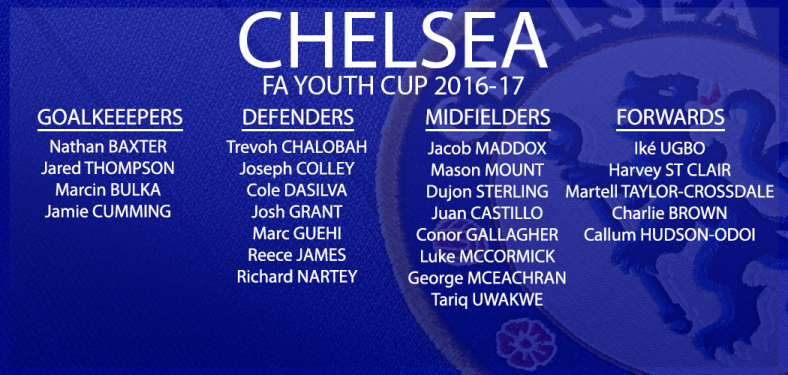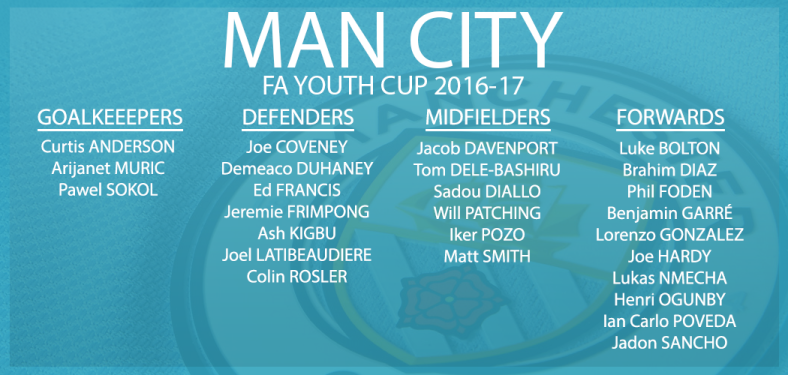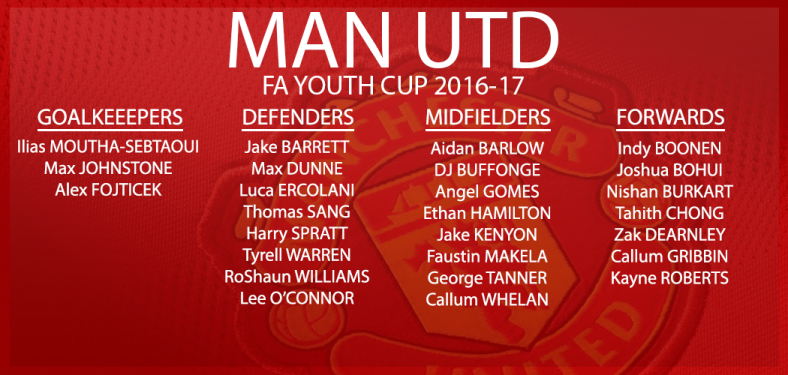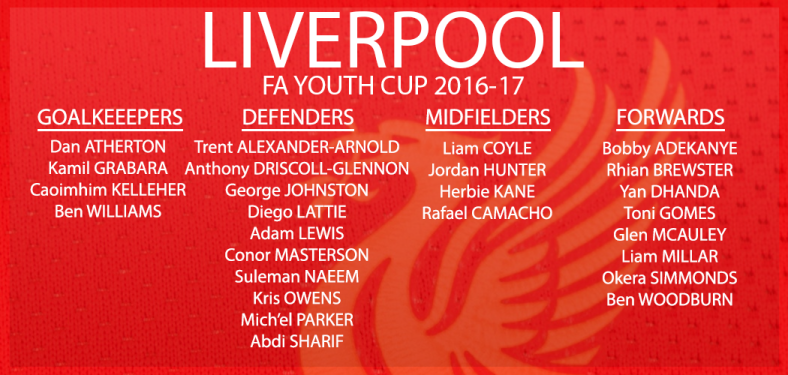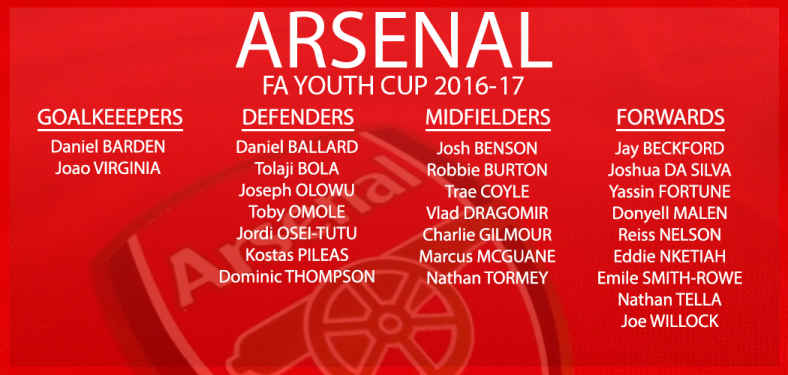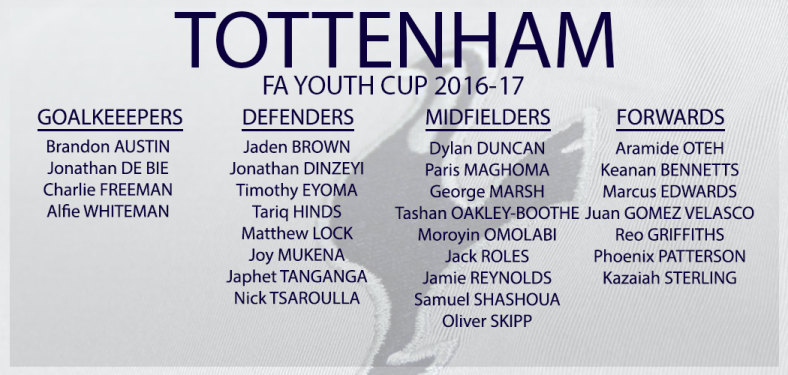A Disclaimer and a Dedication
Firstly it’s only fair in a piece which dwells much on the strengths and weaknesses of Chelsea and Manchester City’s development policies to openly declare my allegiance as a Chelsea fan. My roots in the club go back to listening to my grandfather reminisce about being passed over the heads of the crowd at Stamford Bridge as a young boy in the 1920s and down to stand on the orange boxes laid at the terraces’ front. Chelsea is, and always will be, my club. And that club will always be bigger than any current administration, and the overriding principles of what is right will always be bigger than any club. As such everything should be questioned by those principles (that was taught to me by an old Chelsea fan) and that is what I attempt to do here.
Problem #1 The City-Chelsea bottleneck
A chap with funny hair and even weirder ideas once defined insanity as doing something over and over again and expecting different results. With Jason Denayer – a full Belgium international deemed not good enough for Man City’s first team – leaving Eastlands on loan once more and, at the time of writing, Ruben Loftus-Cheek barely allowed to even practice his bench-warming skills, it’s high time someone quoted Einstein to the geniuses in Man City and Chelsea’s boardrooms before exhorting them to look for far more radical solutions to the problem of youth promotion. The basic principle of youth development is something both believe in (as the strength of their youth teams demonstrates) but they are yet to find a workable practice for creating first team players which fits in with the demands of modern title-chasing teams.
The recent model has been to acquire all the finest young players they can, train them up to an extraordinarily high standard as 18/19-year-olds, before leaving them in the cellar of U21 football (adjacent to the dungeon of perpetual loans) in the hope – although none of them have so far – that they’ll suddenly begin maturing into fully-grown world-class footballers. This hasn’t been overly successful – attested to by Chelsea’s collection of growth-stunted players who once promised much (indeed the list of players who were the finest talents of their generation yet faded at Chelsea seems to be the only the thing that has continually grown).
Chelsea, under Mourinho, have varied a little from this by taking a handful of U21 players to train with the first team, so that their competitive football is gained not on loan or with the U21’s, but in the club’s first team training sessions (a lack of true competitive action that has its own downsides) and all but one have followed this promotion by later going out on loan.
City’s solution is increasingly to limit the number of loan spells before looking to sell their produce for a good price; while there are also signs Pellegrini is hoping to improve his long-term job prospects by bringing through the elite of his club’s elite youth players – if he can manage it.
The general theme is still likely to continue however as the only real consequence of failure to the clubs is the financial outlay – relatively small to them – and so, without major incentive to change, they will go on in the hope that eventually players will start to get through. In this, City are five years behind Chelsea and their fans have fresher hope than many of Chelsea’s who are more cynical, but the disappointment is unlikely to differ since both clubs are competing in the same environment.
While Chelsea run a very cost-efficient worldwide talent acquisition hedge fund in the pursuit of bypassing Financial Fair Play’s (FFP) constrictions, the very fact that youth development is exempted from FFP spending (to encourage it) means the clubs can be wholly inefficient in how they invest their money when it comes to youth development. Under FFP, if they spend £10m on their youth system and sell a player for £1, they’ve made a £1 profit, not a £9,999,999 loss (this calculation doesn’t include player wages, which aren’t exempt); consequently they are encouraged to sign as many players as they can, but have no reason to overly exert themselves in maximising that investment. In this position, FFP is in an impossible place as it either promotes inefficiency, or it quashes the development of youngsters at the major clubs (this later part is debatable – and even if it is true, it might be argued to be a good thing for the clubs themselves, as will be seen later – but that’s how FFP’s rule-makers clearly see it).
While the clubs could decide to prioritise youth players to realise this form of investment, it’s doubtless judged that would create major losses in other areas, so it’s something money’s pumped into in the hope that maybe something will come of it, but it doesn’t really matter if it doesn’t. FFP has created a strange anomaly in a line of work that likes to refer to itself as an industry, as money can be invested with no expectation of returns since under FFP they can never financially lose, so they’re free to gamble to their hearts’ content. The result – as in any other business where inefficiency is accepted – is that it becomes the rule, and challenging it is a form of disobedience.
Promise Elsewhere
As for the future, young players will still join the big clubs, chasing dreams laced with gold in the belief that they will succeed where all others have failed (a belief every sportsman needs if they are to succeed). The clubs beneath them whose players they sign will complain and moan (while doing exactly the same thing to the clubs beneath them) and the produce of an increasingly fruitful national system will begin to become ever more plentiful as players in the Championship and League One, such as Joe Gomez and Dele Alli, make their way up to the Premier League, bypassing their peers contracted to the major Premier League clubs, who will be moving on loan to the Championship, League One and assorted foreign leagues.
Nationally things are improving: instead of Chelsea seeing their only young centre-back transfer options to be players nurtured at St. Etienne and RC Lens they now have the option of signing players trained at Barnsley (options who will block their own internally produced player’s pathways). The forecast for how things will appear in five years’ time for English youth development is definitely much brighter than it was five years ago. Yet even if it does materialise the amount of talent developed brilliantly, then wasted dismally by City and Chelsea will greatly diminish the overall picture as their age group sides usually account for around 25-40% of the elite talent in the country. Even if someone like Loftus-Cheek or Barker should get through, the amount of talent lost should not be acceptable to anyone in football (not that the clubs who see the players as little more than speculative assets will mind).
The Push-Pull Effect
Before going further it’s important to make a distinction between the academies of Chelsea and City, and the other areas of their clubs which are concerned with strategy, finance, marketing, scouting, player acquisition and the first team set-up. While it might be ideal for all these departments to be working together, as in any large organisation they all have fractional interests and seek to advance their own, usually conflicting, agendas. Hence these departments are really separate entities united only by coming under the same umbrella of funding for which they compete.
In this setup City and Chelsea’s academies have one of the smallest power bases as they add nothing to the core profitability of their organisations and are therefore expendable – treated somewhat like parasitic departments who leach off the successes of the first team and are expected to be grateful for what they can get. Consequently you will never hear those in an academy criticise the hierarchies above them even when they need to hear it, as the academy staff know full well they’re likely to be asked to leave over “a difference of opinion upon footballing matters”.
The bizarre consequence of this is that City and Chelsea’s academies are tiny, relatively powerless institutions within their own clubs, yet massive within the youth game, but, compared to the power MK Dons, Coventry, Barnsley’s (and even Liverpool’s) academy’s exert internally within their clubs, City and Chelsea’s academies are still tiny as a corollary of their impotence within their club’s power structures. As will be demonstrated, the result of City and Chelsea’s academies being giants in the youth game up to the age of 18, and insignificant from then on, has a very dangerous, distorting effect on the shape of English football to come.
A Modern Parable
A good case study of how City and Chelsea’s highest decision-makers are hindering the development, not only of their own academies and the English national team, but more importantly the English game at large (including the Premier League in the long-term) is to be found in the diverging paths of Joe Gomez, Kasey Palmer and Charlie Colkett.
All three are England youth internationals united by having been associated at one point or another with Charlton Athletic’s September 1996 – August 1997 academy intake. All had the opportunity at different ages to join top four clubs before they had made a senior appearance for Charlton. Colkett joined Chelsea at U-11 level, Palmer followed in his footsteps as a first year scholar with a move eased by EPPP’s transfer regulations, while Gomez’s representatives turned down a multitude of offers from eager admirers as he and his family saw Charlton as the first step in his progression to the top.
It’s arguable that although Colkett has had a wonderful youth career – spent in world-class facilities, surrounded by peers of equal talent, and coached by some of the finest practitioners at youth level – that had he stayed at Charlton (and injuries or bad luck not intervened) he, like Gomez, would be playing in the Premier League this season – certainly the Championship at the very least.
As it is last seasons FA Youth Cup and UEFA Youth League winner isn’t even pencilled in for a minor role in Chelsea’s first team squad and he will have to become a world-class player through a series of loan spells over the next four years if he is to get a chance.
If the impeded development of perhaps England’s most creative passing talent since the likes of Paul Scholes and Glenn Hoddle isn’t depressing enough then spare a thought for Kasey Palmer. Whereas Colkett, alongside Charly Musonda, was one of Chelsea’s most impressive performers last season in those aforementioned FA Youth Cup and UEFA Youth League victories, Palmer – despite a show-reel of extraordinary goals to complement some impressive displays – was largely on the bench for the big games. In his long-term Chelsea career prospects he’s behind a group of exceptional young attacking midfielders, who are behind a group of world-class attacking midfielders, and they – as the recent signing of Pedro demonstrates – are liable to be added to by yet more world-class attacking midfielders.
In 2014-15 Palmer, like Gomez – with whom he played above age group with for Charlton – should have been impressing in the Championship in preparation for a step up (or maybe even helping Charlton step up). Instead he was with the rest of Chelsea’s youngsters whose attempts to achieve first team football with the Premier League champions is rather like struggling to leap onto a mountain peak, rather than following Gomez’s example of making a measured, manageable ascent.
The European Plutocracy meets EPPP
In their wasteful ways Chelsea and City will not be alone in the next five years, alongside them on a continental level will be Barcelona, Real Madrid, Bayern Munich – indeed all the European powers are discovering that as a consequence of the modern moneyed order, internal youth development is becoming nigh-on impossible. The concentration of senior talent around a few super-clubs means it is now easier to start for Belgium than it is for Manchester City. Even impressing on loan, which is what the clubs ask for, isn’t actually good enough when it comes to competing with a £30m signing, as Bertrand Traore and Denayer are finding out. Their only chance is to do what Nemanja Matic, Paul Pogba and Kevin De Bruyne have done which is to leave major clubs and establish themselves in the European upper mid-tier, before potentially returning to the heights.
While these issues are European ones they are amplified in England by the Premier League. At this juncture we come to the Elite Player Performance Plan (EPPP), the Premier League’s proposal for improving the quality of English youth football. In many areas EPPP has, and is, doing just that, the problem though was in drawing it up; with input from the big powers, the focus was solely on producing the best players at 18, not the most successful professionals at 23.
The consensus therefore was for centres of excellence such as City’s, Chelsea’s and Tottenham’s where the top players, facilities and staff – administrative, scouting, coaching, medical, and analytical – would come together with greater periods of contact time than ever before. As a result of these and other reforms Chelsea and Man City now have two of the best youth teams in Europe.
In many ways City and Chelsea’s success in the FA Youth Cup and UEFA Youth League last season was what EPPP was designed to facilitate: a group of English super-youth-teams. It could be said that with Chelsea’s victory in the UEFA Youth League the ultimate goal of EPPP – to improve the quality of the players – has already been achieved. Which is the problem as EPPP had the wrong goal in sight; just improving the quality of the players was far too short-sighted – something demonstrated by the Chelsea all-star youth team, which, having won the UEFA Youth League, now has no first team to play in.
How this situation arose is largely down to the Premier League’s obsession with money and status which is exacerbated by its sycophantic adoration of those clubs who possess and create the majority of the wealth. This worship of the big clubs resulted in EPPP being set up (in part) to ease the giants’ accumulation of the best young talent. Simultaneously, however, many of the clubs that have been given access to the youngsters to improve them, don’t want to risk playing them (particularly Chelsea and City), and so the Premier League’s chief executive – who doesn’t want young English players damaging his league’s global marketability – recently announced he can’t see why the national team shouldn’t be made up from players at the lower Premier League and Championship clubs – the clubs which his organisation is busy directing young players away from.
The blatant question then is why is the system not designed so that the best academies and talent are based around the clubs Scudamore thinks the national team should be picked from, rather than the opposite scenario where it is actively siphoned away from them to the clubs where he thinks it shouldn’t be playing?
As mentioned this is partly due to the desire of the big clubs, but also the naïve idea that producing a better quality of player would automatically result in opportunities. After all, if you’ve got a player of Messi’s prodigious ability there isn’t a club which wouldn’t play him. Except there is a club whose members now balefully acknowledge if it had a 17-year-old Messi in its junior ranks it wouldn’t play him, and that club is Barcelona.
Perhaps the greatest misfortune of EPPP was that it was developed at a time when Barcelona would’ve been prepared to slowly introduce a junior Messi alongside their senior one. 2011 (when EPPP was implemented) was on the very cusp of the movement of European football from a plutocracy to an absolute one, where playing youngsters for the giants has become an unaffordable risk, while signing them is the most affordable one.
It’s also worth pointing out that Chelsea – who under Neil Bath were pioneers of the modern school of English youth development up to the age of 18, and crucial to the development of EPPP – were managed by Carlo Ancelotti at the time EPPP was being drafted. Ancelotti was more than prepared to give opportunities to young players who – apart from two cases – were not as good as those now available to Mourinho. In 2011 there still seemed to be a chance of young players breaking through at the big clubs and in the 2010-11 season Josh McEachran made 17 appearances before his career was disastrously derailed by the arrival of Andre Villas-Boas.
In 2011 other arguments were put forward for EPPP’s favouritism of the big clubs with the main one being that it was better for a youngster to be at a big club’s world-class academy (where there was rarely going to be a chance of first team football) than to be at a good academy of a less prestigious club (where there was a much greater chance of first team football and a subsequent rise up the pyramid). It’s an argument that’s a fair indicator of how all the attention at the time was on improving the work of the academies and little was seriously directed towards first team opportunities once the work had been completed as it was assumed to be a given.
As a result, England now has probably two of the top three academies in Europe which are rendered near-redundant by their inability to provide the standard of football the players require after the age of 18.
The Glass Ceiling
The harsh truth now for youngsters at City and Chelsea is that talent isn’t enough, hard work isn’t enough, experience isn’t even enough, in the plutocratic era to earn a spot in one of the top two teams you have to possess all of the above and a big price-tag, and preferably a marketable, sponsor-friendly image to go with it.
Although the big clubs may like the idea of saving money, they much prefer the idea of spending it; in this they vary little from the fans who want a £50m over an upcoming youngster. A reason for this might be that the common denominator between the decisions of clubs and the whims of fans is the human brain.
There is a famous neuroscience study where two groups of subjects placed in a brain scanner were given wine to drink through a tube then asked for their opinion on it. Though they were all given the same wine one group of subjects were told it was expensive and the others that it was cheap. Perhaps unsurprisingly those who were told it was expensive reported they enjoyed it far more; of greater significance the brain scanner showed that in the group of subjects who believed the wine to be expensive, the parts of the brain in their pre-frontal cortex that deal with pleasure and reward showed intense stimulation, something not present with the subjects who believed the same wine to be cheap.
Applying this theory to football it should be possible to watch the same performance from a youngster and decide that it is okay or even shaky, while had it been given by an expensive signing it would have been approved (indeed this effect is frequently observable when youngsters – whose playing style isn’t immediately flashy or eye-catching – begin playing: Nabil Bentaleb, Harry Kane, Ryan Mason, John Flanagan and Hector Bellerin all suffered at the start of their careers from the idea that they didn’t cost anything, so they must be rubbish). As this is a human phenomenon, there is no reason why those working at clubs should be any different to fans (unfortunately wine critics were not included in the study, but they have been embarrassingly caught out like this before, just not in a scientific setting).
That said most fans are savvy enough to realise – once they see the players in action for long enough – that the average Championship defender they bought for £3.5 million, is comparatively a much better prospect than the £35 million PL striker they bought and discarded a few years earlier.
Courage in the first team footballing departments is something English football could do with far more of and, thankfully, as noted in previous articles, a little of it does seem to be taking hold at certain clubs.
A further problem youngsters face at City and Chelsea is that the club’s transfer policies tend to work on a system of covet-economics i.e. what you don’t have is better than what you do, and there’s no point growing what you already have when you can keep it and buy something somebody else has to go along with what you already have. Again this is basic human psychology in the desire to accumulate and increase oneself, but when applied to football clubs it is highly irrational as they can’t play youngsters at the same time as signing superstars in their place. It is one or the other.
The next problem is the loan system. The development of FL youngsters who’ve advanced to the PL attests to the importance of an uninterrupted rhythm or cadence of progression up towards the peak of the game. It’s vital that players who’ve played above age group all their youth careers continue on that path and remain a distance above their peers, rather than watching as they catch up with them, and find that momentum irreversible. As with the academies that are responsible for finding the correct challenge for the player, this is something wholly down to the clubs.
No amount of character can make a player improve when they’re not being challenged to play above themselves, as it’s that very need to improve, for the level to that bit above their current abilities, that forces them to adapt, but when that challenge is missing there’s nothing the players can do not to stagnate. It is the fact that youngsters need to play above their abilities to develop and that City and Chelsea can’t afford to play players beneath their level, which is the fundamental dissonance neither club will admit to as loanee clubs are no more prepared than they to play youngsters they believe are beneath their level. So the rate of progression, so smooth for ten years, rapidly halts when they hit the senior game as their clubs have no incentive to ride out the initial adjustment period in expectation of the benefits to come.
Another of the interesting points about the recent progression of youngsters at FL clubs up to the PL is the small number of games they have required before they are ready for the next step (usually into a clubs U21 team for a spell). John Stones played 25 games before moving, Mason Holgate 20, Joe Gomez 23, Brendan Galloway only 10, – these figures read as if they’d been playing in their academies next age group up, before moving onto the next one. Dele Alli is the outlier in this group and that’s because he was effectively moved up above age group earlier than all the others. It’s this sense of progression that is missing and it also shows that no more than one loan spell in the FL is required before players are ready for the PL.
The repeated number of loans, employed particularly by Chelsea, is rather like a child attending university while living at home, there’s always that sense of the virtual umbilical cord of adolescence being protected and the child can never fully get the experience of depending on themselves which they need to grow. Nor can they establish any roots at a club, or have simple achievable goals laid out before them, instead they’re in limbo between a parent club that might have use of them, and a temporary one where they know their future doesn’t lie. Chelsea have succeeded in masterminding for their players just about the most unfavourable conditions of development after the age of 18 that they possibly could have – something absurdly contrasted by how they genuinely provide the best possible conditions up to the age of 18. It’s rather like the world’s best secondary school that will never let its pupils leave and become adults.
The Solution – Reality
In truth for Chelsea there isn’t one, and there isn’t going to be one, other than prioritising foreign loans over domestic ones which they, like City, largely seem to be abandoning – blaming the quality of lower-level domestic football for their failure to develop first team players through loans (and ignoring the successes of FL players such as Stones, who both would like to have in their team). This season has been the first where Chelsea have truly utilised Vitesse to develop their own internally-produced players, though the struggles of Bertrand Traore – who had an exceptional loan the year before – to get Chelsea appearances suggests little of substance will change.
City appear to be looking at following the Barcelona model where they sign players from abroad, develop them, then – before they begin to stagnate – sell them for a profit, with the prospect of buying them back if they continue to progress. Adama Traore, Olivier Ntcham and Marcos Lopes are examples of this from the recent transfer window and it appears to be a sensible, if not ideal, strategy, but that is where its virtue lies as it’s realistic, rather than hopelessly idealistic.
For the smaller clubs whose talent pool the giants limit it is perhaps to be hoped that they are more proactive in the recruitment process in showing parents the successes of Stones, Gomez and Alli and the failures of Chalobah, McEachran, Kakuta, et al, (rather than just talking in abstract terms about players failing at big clubs – which always sounds more like trying to scare the parents into opting for their clubs rather than helpful advice) but that will almost always be futile against the almost-impossible-to-resist lure of immediate financial stability, dreams and a world-class footballing education.
That said times have changed; if my son had been approached to play for Chelsea in the period of 2005-2011 I would have seen their quality of coaching and standard of care as far too good to turn down, but with the ever lengthening list of failures there is no way I could now choose Chelsea over clubs such as Tottenham or Brentford who also offer an excellent education with a much greater chance of first team progression. In this, however, I am fortunate as I am not living on a council estate, and I think very few people in such circumstances could turn down the instant comfort and seemingly unending promises of Chelsea and City if they were actually faced with them (this is not to excuse those parents who treat their children as cash cows and fool themselves it’s in the child’s best interests, and nor is it to say that the parents of players at City and Chelsea do so. Every case is unique).
On the EPPP side of things a re-evaluation of the current criteria is ongoing (and desperately needed) and it would be a major boost for the youth system if – having succeeded in forcing up the standards of investment, coaching provision and facilities in the first four years – they decide to shift the admittance criteria for the tier 1 category, which currently contains too many clubs who may fulfil pre-set spending, facility, and staffing requirements, but are inefficiently run.
Meanwhile those clubs who are highly efficient in terms of skilful recruitment and quality coaching such as Ipswich, Brentford, Barnsley, Charlton, Coventry and MK Dons, to name but a few, are unfairly penalised and the English game needs their work to be rewarded. Their minimisation also has a knock-on effect on the tier 1 teams who’d benefit more from playing the well run tier 2 and 3 sides, as opposed to the badly run tier 1 sides. When it comes to how academies are audited it would be to the systems’ benefit if greater emphasis were placed on the quality of player produced and the pathways available.
Quite what the outcome will be though is hard to say and they may well decide to introduce a new middle tier while cranking up the admission criteria for the tier 1 category so that both the inefficiently run tier 1 academies, and the well-run lower tier clubs find entrance impossible and it becomes even harder for them to hold onto their players (and even harder for those players who leave to get first team opportunities).
As suggested earlier, EPPP’s centralisation is troublesome as it rushes many of the best players and coaches to hubs where the blockage at the end of the academy system into first team football negates the brilliant work they do. Obviously the Premier League is a lobbyist for its biggest and most powerful members and it’s never going to go against what the big clubs see as being to their advantage, so change, though necessary, is hard to see.
Coming soon, Part 2: The hard-to-see solutions
Our enormous thanks go to Samuel King once again for this brilliant article. You can follow him on Twitter @KingSRV.


